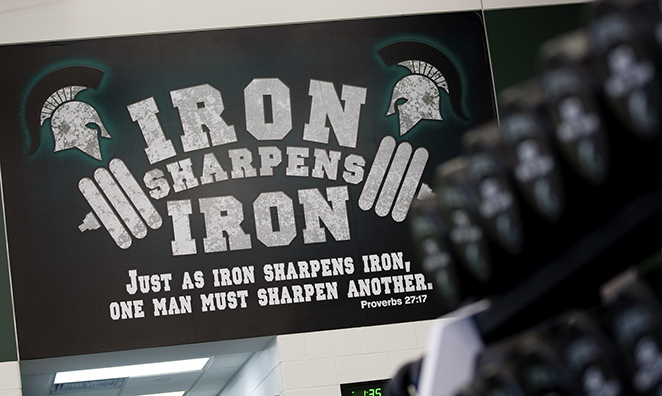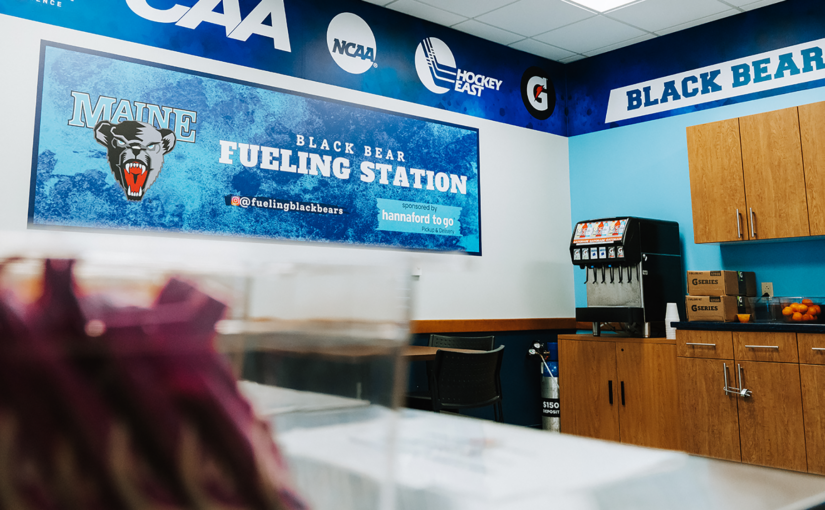Iron Sharpens Iron: Put Your Name On It
Put Your Name On It — Making good decisions in critical moments of choice is a quality that all coaches want their athletes to master. Unfortunately, it isn’t always that easy. Youngsters in the age groups we work with tend to make hasty decisions on the spot, with little regard for the possible outcomes. That’s why, after making a bonehead mistake, they will say, “That’s not really me.”
And, most of the time – at least we’d like to believe – it isn’t. As with all of you, I’ve always given young people the benefit of the doubt, knowing that every so often they will slip up, and certainly, I try to recall some of the miscues I’ve had in my own life at their age. We’ve all been there, haven’t we?
 According to the American Academy of Child & Adolescent Psychiatry (AACAP), adolescents are more likely to:
According to the American Academy of Child & Adolescent Psychiatry (AACAP), adolescents are more likely to:
- Act on impulse.
- Misread or misinterpret social cues and emotions.
- Engage in dangerous or risky behavior.
Conversely, they are less likely to:
- Think before they act.
- Pause to consider the consequences of their actions.
- Change their inappropriate or dangerous behaviors.
“There is a specific part of the brain called the amygdala that is responsible for any immediate reactions – including aggressive behavior and fearful situations. We also know that the frontal cortex controls reasoning and helps us think about the situation facing us before we act. The frontal cortex is still in a developmental mode in adolescents and is still changing and maturing well into adulthood.” [Source: The AACAP, 2020]
In coaching terms, here is an exercise you can share with your athletes on a daily basis to help them in decision making, especially those critical moments of choice; those times where the wrong decision can have long-term negative consequences.
Simply put, it goes like this: Before you go anywhere, do anything, say anything, put yourself in any situation, pause for a few seconds, and ask yourself, “Do I really want to put my name on this?” Just as important, do I want to put my family’s name, my school’s name, my teammates’ names, my coaches’ names on this? This easily executed exercise in pausing for a short time forces one to come to the center and think a little more clearly before acting on impulse, which is so very common with young people.
It just might make them think twice about going there, doing that, saying something inappropriate, or putting themselves in a risky situation.
» ALSO SEE: How Wear & Tear Varies Between Turf Types
I’ve used this short phrase with athletes dating back to the mid-seventies and my time as a high school teacher and coach and all through my college coaching career. I know the impact it can have because of the stories many of those young people have shared with how they now also use it – with their own kids, co-workers, and those they supervise on the job.
We ask our student-athletes to give their very best effort in the classroom, in their training, in practice, and in games. “Put your name on it” has a million applications for leading a life of discipline and hard work.
And really, doesn’t it apply to all phases of life?
Stay strong, stay in the fight, and keep making an impact!
Ken Mannie is the former head strength and conditioning coach for Michigan State University. He worked in the position for 25 years, and following his 45-year tenure, Mannie retired in March 2020.





